Removal Procedure
Tools Required
| • | J 21177-A Drum to
Brake Shoe Clearance Gage |
Caution: Refer to Brake Dust Caution in the Preface section.
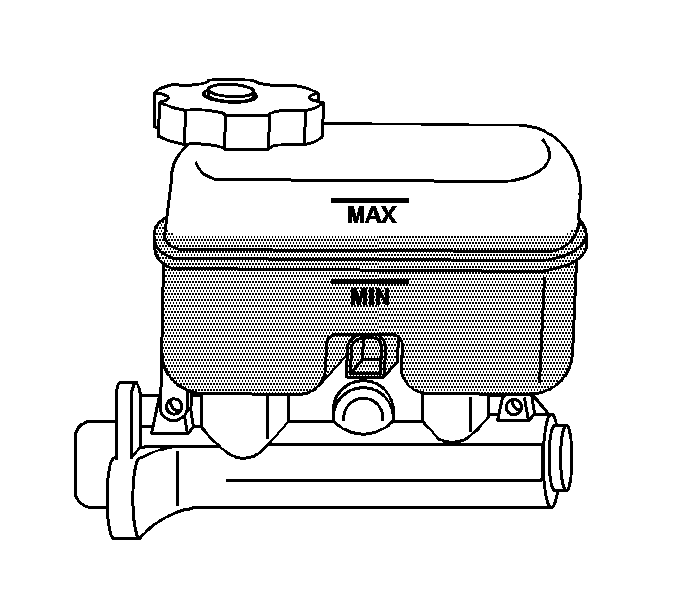
- Inspect the brake fluid level in the brake
master cylinder reservoir.
- If the brake fluid is midway between the maximum-full point and the minimum
allowable level, no brake fluid needs to be removed from the reservoir before proceeding.

- If the brake fluid level is higher than
midway between thew maximum-full point and the minimum allowable level, using a appropriate
tool, remove the brake fluid to the midway point before proceeding.
- Raise the vehicle. Refer to
Lifting and Jacking the Vehicle
in General Information.
- Remove the tire and wheel assembly. Refer to
Tire and Wheel Removal and Installation
in Tires and Wheels.
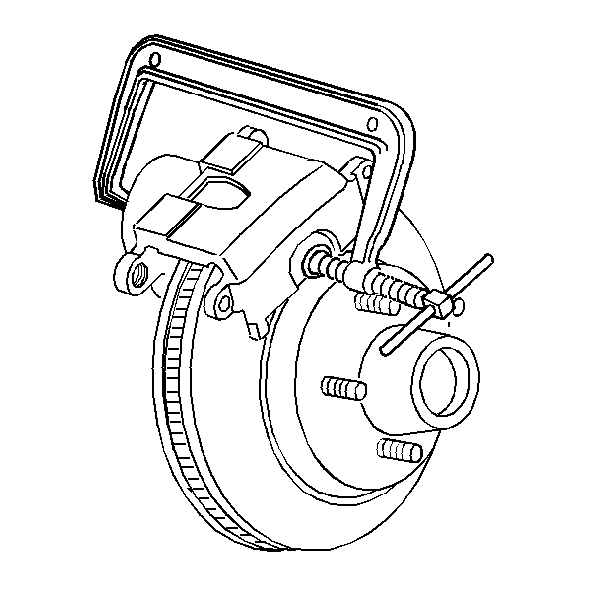
- Compress
the rear brake caliper piston.
| 6.1. | Install a large C-clamp over the top of the brake caliper housing and
against the back of the outboard brake pad. |
| 6.2. | Slowly tighten the C-clamp until the piston pushes into the brake caliper
enough to slide the brake caliper off the rotor. |
| 6.3. | Remove the C-clamp from the brake caliper. |
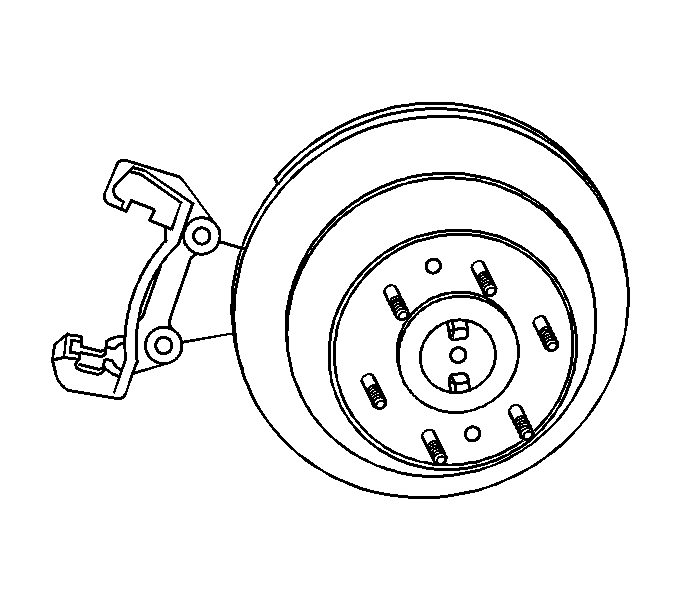
- Remove the rear brake caliper mounting bracket.

- Remove the brake rotor retaining clips,
if equipped.

- If the brake rotor is stuck perform the
following:
| 9.2. | Insert J-46277
between
the rotor friction surfaces in the vent section of the rotor. DO NOT place the J-46277
on the rotor friction surface. |
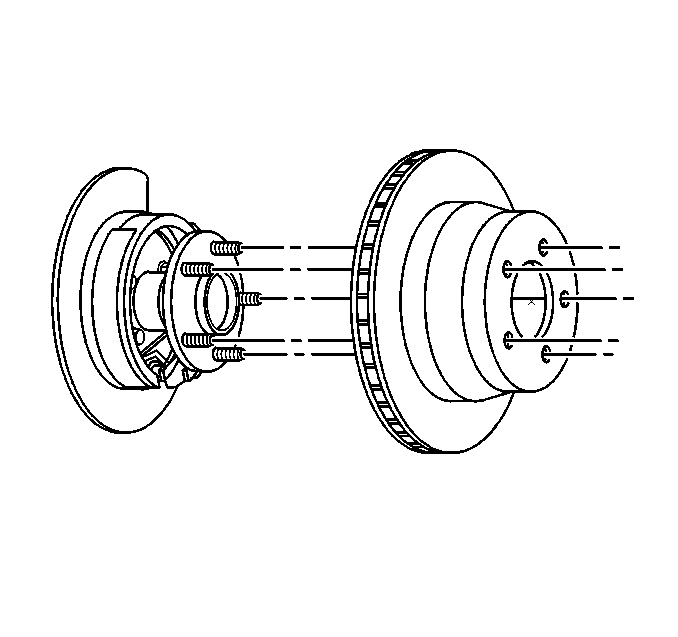
Notice: Whenever the rotor has been separated from the axle flange, clean any
rust or foreign material from the mating surface of the axle flange and brake
rotor. Failure to do this may result in increased lateral runout of the rotor
and brake pulsation.
Important: If the brake rotor is not going to be replaced
but just removed from the front hub to be refinished, mark the brake rotor left or
right and relationship of the brake rotor and a wheel stud. In doing so, is will reduce
the possibility of vibration in the brake system.
- Remove the brake rotor.
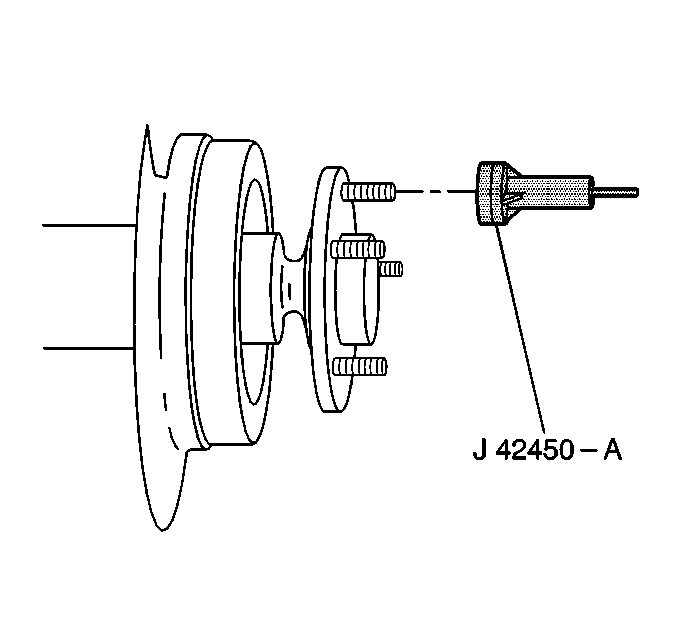
- Using the J 42450-A
, clean the brake rotor to rear axle flange contact area.
- Refinish the rotor if necessary. Refer to
Brake Rotor Refinishing
.
- Inspect the park brake components. If any of the following conditions
are found replace the affected parts.
| • | Bent or broken hold down spring |
| • | Broken, cracked or worn brake shoe lining |
| • | Bent or damaged brake shoe |
| • | Worn, bent or damaged backing plate |
Installation Procedure
- Clean the park brake shoes using denatured alcohol.
- Dry the park shoes using non-lubricated, filtered air.
- Lubricate the contact area between the park brake shoe and the backing
plate with high temperature silicone brake lubricant.
Important: It maybe necessary to readjust the park brake
shoes to allow the brake rotor to be reinstalled.
- Adjust the park brake. Refer to
Park Brake Adjustment
in Park Brake.

Important: Ensure that the rotor to axle flange relationships
marks are aligned, if the brake rotor has been refinished, after the brake rotor is
installed.
- Install the brake rotor by slowly turning the rotor while pushing the rotor
on the axle flange.

- Install the rear brake caliper mounting
bracket. Refer to
Rear Brake Caliper Bracket Replacement
.
- Install the tire and wheel assembly. Refer to
Tire and Wheel Removal and Installation
in Tires and Wheels.
- Lower the vehicle. Refer to
Lifting and Jacking the Vehicle
in General Information.
- Refill the brake master cylinder reservoir, if needed. Refer to
Master Cylinder Reservoir Filling
in Hydraulic Brakes.
Caution: Do not move the vehicle until a firm brake pedal is obtained. Failure
to obtain a firm pedal before moving vehicle may result in personal injury.
- Pump the brake pedal slowly and firmly in order to seat the brake pads.
- Burnish replaced or refinished rotors. Refer to
Brake Pad and Rotor Burnishing
.










